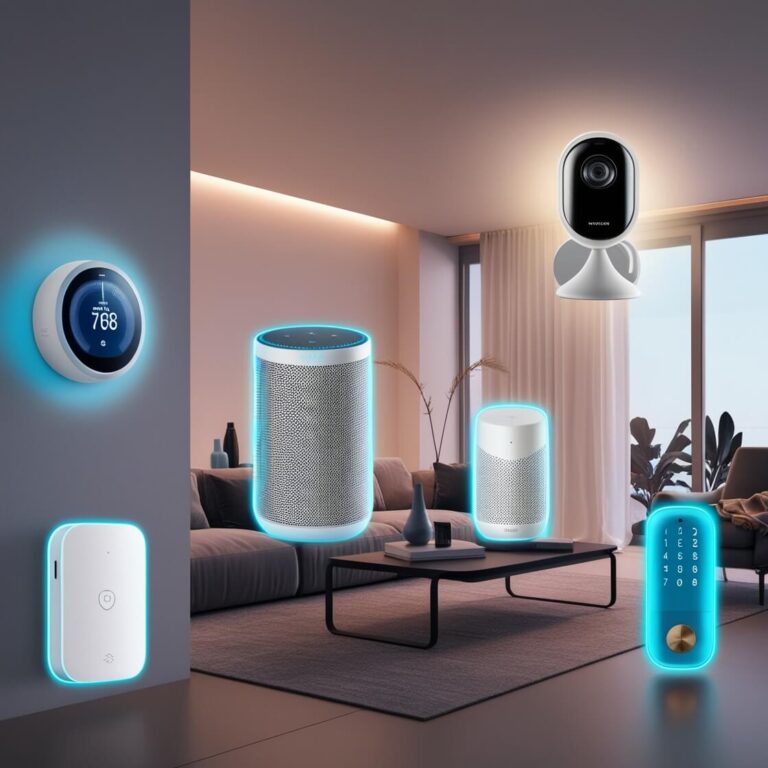
Smart homes promise convenience and innovation, but they don’t always deliver as expected. Common failures include poor device compatibility, weak internet connections, or neglected security measures. Other issues like lack of proper setup and underestimating costs can also derail your smart home experience. This blog highlights six reasons why smart homes fail and offers practical solutions to help you avoid these pitfalls and create a functional, reliable smart home.

Smart home technology is evolving, and these 11 trends prove it’s more than just a passing craze. From energy-efficient devices and AI-powered assistants to advanced security systems and personalized automation, these innovations are transforming the way we live. Discover why features like smart kitchens, health monitoring gadgets, and eco-friendly upgrades are gaining popularity and how they can make your home smarter, safer, and more efficient than ever.

Your family’s safety is a top priority, and smart home security can help. From installing smart locks and video doorbells to setting up motion detectors and using strong passwords, these tips are essential. This blog highlights four must-follow smart home security practices to protect your loved ones and your property, ensuring peace of mind every day.

Streamline your life with smart home hacks designed to simplify your daily routine. Automate your lights, adjust your thermostat remotely, and set up voice commands to handle everyday tasks effortlessly. From scheduling coffee makers to syncing reminders across devices, smart technology saves time and energy. This blog shares practical tips to make your smart home work harder for you, boosting convenience and efficiency in every corner of your home.

Smart homes offer convenience and innovation, but they aren’t without drawbacks. Hidden costs, such as device upgrades and maintenance, can add up quickly. Privacy concerns arise as connected devices collect and store personal data. Compatibility issues between brands can cause frustration, and reliance on the internet leaves your home vulnerable during outages. In this blog, we’ll uncover five downsides of smart homes that often go unnoticed, helping you make informed decisions.

Thinking about upgrading your home? There are several signs you’re ready for a smart home transformation. From wanting enhanced security and energy efficiency to craving more convenience in your daily life, smart home technology can simplify things and add value to your property. If you find yourself excited by the idea of managing everything from your phone and improving your home’s functionality, it’s time to take the leap into the smart home world.

Smart homes are safer for families for three key reasons. First, they offer advanced security systems like smart locks, cameras, and motion sensors that provide real-time alerts. Second, smart fire and carbon monoxide detectors ensure early warnings, preventing potential disasters. Third, automation features like remote access and voice control allow you to monitor and manage your home effortlessly. These reasons make smart homes a reliable choice for protecting your loved ones.

As we age, the risk of falls becomes a significant concern for many families. A single fall can lead to serious injuries, impacting not just the individual but also the entire family’s peace of mind. That’s where advanced Fall Detection…

Protecting your home and family from fire hazards starts with proactive planning and smart choices. Install smoke detectors on every level of your home and test them regularly. Create a fire escape plan, keep fire extinguishers accessible, and avoid overloading electrical outlets. Be cautious with open flames and teach kids fire safety basics. Our guide outlines 10 essential steps for fire prevention, helping you safeguard your loved ones and property with confidence.

Social media can expose children to cyberbullying and negativity, impacting their emotional well-being. As a parent, fostering open communication is key—encourage your kids to share their experiences online. Set boundaries on screen time, monitor their activity, and teach them how to block or report harmful content. Our guide provides practical strategies to protect your children from online harm, empowering them to navigate social media safely while building resilience against negativity.










